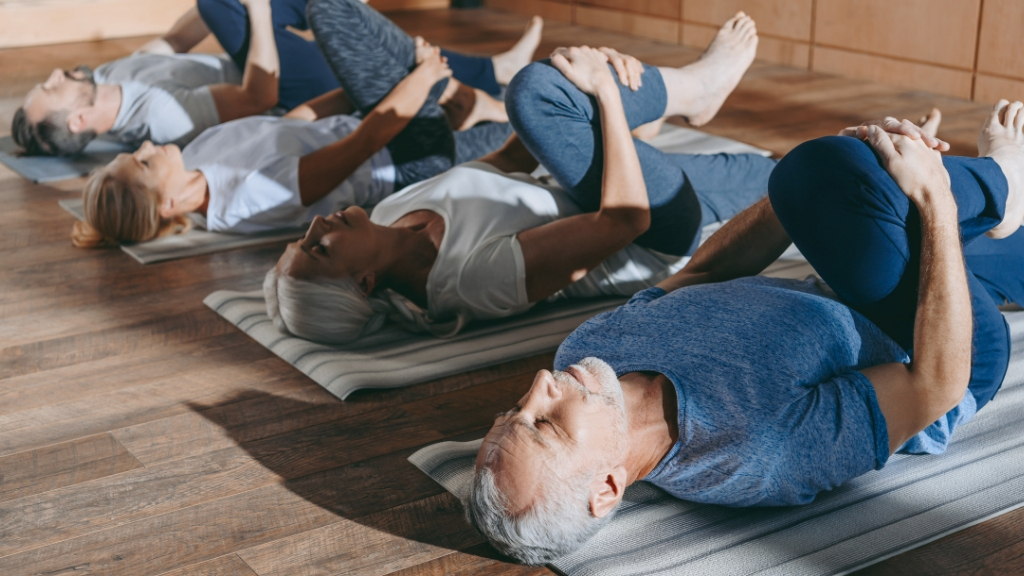Preventing Osteoarthritis: Symptoms, Risks, and Natural Treatments
6 minute read
Osteoarthritis is a disease that affects the joints in your body. Wrapped around your joints, between your bones, is cartilage that’s there to protect the joints. Over time and due to other factors, that cartilage can break, leaving the joints vulnerable and causing pain, swelling, and limited mobility.
The Arthritis Foundation lists osteoarthritis as the most common joint condition in the United States, affecting approximately 27 million people in this country alone. The statistics the Arthritis Foundation cites suggests half of all adults will develop osteoarthritis symptoms in a knee during their lives, while a quarter of all adults will develop the symptoms in a hip.
With so many people afflicted with osteoarthritis, it’s important to learn more about what your risk factors are, what causes osteoarthritis, and if there’s anything you can do to prevent it.
Risk Factors for Osteoarthritis
In the past it was believed that osteoarthritis was caused by wear and tear on the cartilage. While this can still be a factor, it is now viewed as a joint disease. The following are risk factors that can contribute to the development of osteoarthritis:
Age: While osteoarthritis doesn’t discriminate, it does tend to be a disease that develops later in life, most often in people over 65.

Genes: There are certain genetic traits that can make you more susceptible to osteoarthritis. Some of those genetic traits have to do with the protein that makes up cartilage, the way your bones fit together, and/or a gene that is linked to pain sensitivity.
Weight: Being overweight puts additional pressure on your joints. The longer you carry around that extra weight, the more damage it can cause to your joints and cartilage.
Injury and overuse: Repetitive movements can cause injury that’s immediately evident or injury that appears over time (cumulative damage). Athletes are prone to these types of injuries and they raise the risk future joint issues.
But athletes aren’t the only ones who can be in this type of situation, people with certain careers or hobbies that require repetitive motions also have this risk factor.
Preventing Osteoarthritis
There are a few other factors that can make you more susceptible to developing osteoarthritis, but the above are the most common risk factors. Obviously, you cannot do anything about your genetics or your age, but losing weight and protecting yourself from repetitive motions can help.
In addition to paying attention to your risk factors, there are some other things you can do to bolster your health and help lessen, prevent, or postpone osteoarthritis.

Exercise: While repetitive and high-impact exercises can exacerbate your joint issues, low-impact exercise is a great way to improve your joint health and strengthen the surrounding muscles and bones.
If you already have osteoarthritis, exercise can make the symptoms less painful by relieving stiffness and reducing fatigue. Strengthening muscles and bones will also help you manage symptoms and provide support to your joints.
Maintain a healthy weight: Being overweight is one of the risk factors listed above. If you’re overweight, you’ll want to work with your doctor to create a plan of attack that will help you get in a healthy weight range. Sooner is better because the longer you’re overweight, the more damage can occur to your joints and other parts of your body.
| Related: What Are the Symptoms of Osteoarthritis? |
That said, if you’re already at a healthy weight, it’s important to maintain it. As we age our metabolism changes and often there are necessary lifestyle changes as a result. Keeping on top of your weight is as important for joint health as it is for the rest of your body.
Eat right: Another great way to maintain your weight and prevent osteoarthritis is to eat foods that support joint health. Some of those foods are: cherries, red peppers, fatty fish, turmeric, nuts, chia seeds, leafy greens, berries, red apples, garlic, onions, basil, olive oil, ginger, and soy.

Krill oil: Krill oil can decrease joint discomfort for those who already have osteoarthritis or other joint problems.
If you’re looking to prevent osteoarthritis, then you’ll want to find a krill oil supplement designed for joint health. This powerful antioxidant wraps cells in a protective layer that fights free radicals that breakdown and destroy cells.
Estrogen: More women have osteoarthritis than men, and being postmenopausal seems to be a factor in developing this disease. If you’ve reached menopause and are worried about osteoarthritis or if you already have some joint issues, it’s a great time to talk to your doctor about possibly trying estrogen therapy.
Rest: People that have osteoarthritis need to rest to let their joints recover if they begin to feel worn out or like they’re overdoing it.
Similarly, people who are looking to avoid osteoarthritis need to know when to quit and when to rest. Because overuse can be a risk factor, learning not to overdo it and taking a break can mitigate the problem.
While none of the above tips for alleviating osteoarthritis or preventing it are guarantees, they can help you. Plus, they force you to think about putting your joint health first. Just being aware of the problem can help you manage physical activities with more care and in a thoughtful manner.

The Bottom Line
Osteoarthritis is a very common joint disease that affects more people in the United States than any other joint condition. Osteoarthritis happens as the protective cartilage that surrounds your joints is worn away and doesn’t provide appropriate protection.
The known risk factors for osteoarthritis are age, genetics, being overweight, and repetitive use. There isn’t much you can do about your age or genetics but maintaining a healthy weight and being aware of overdoing it can help you prevent osteoarthritis.














